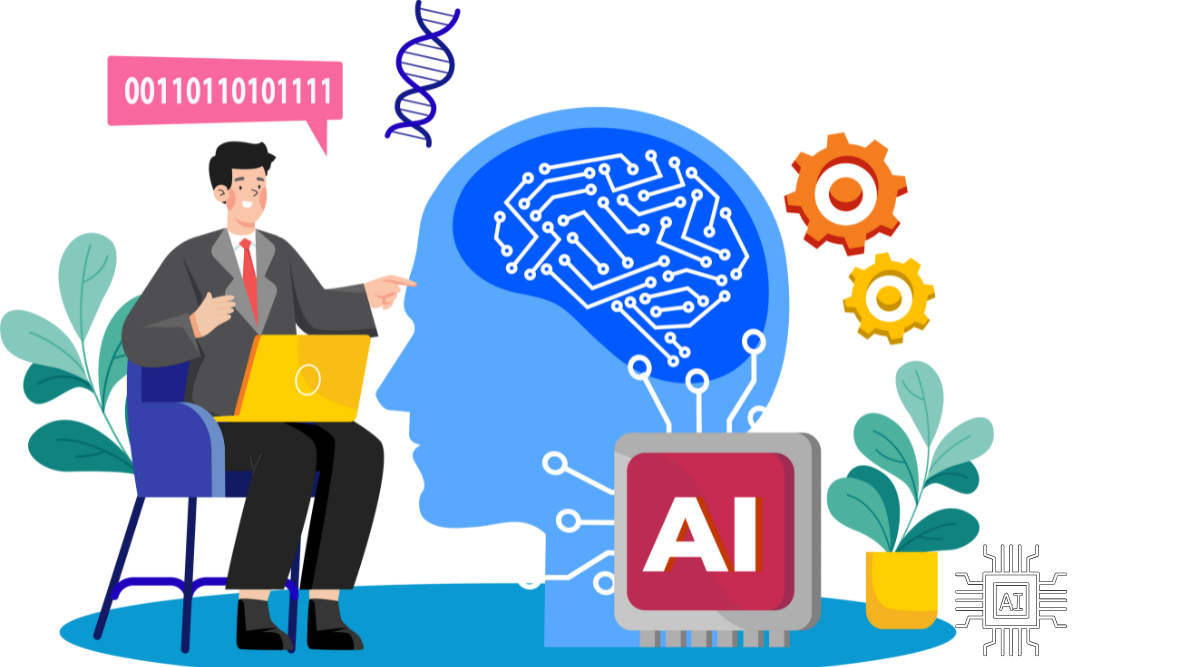Enhancing Developer-Broker Communication Through Automation
Discover tools and strategies for improving developer-broker communication in real estate through automation.

In the dynamic landscape of real estate, the relationship between developers and brokers forms the backbone of successful project completion. Effective communication between these two parties isn't just beneficial; it’s crucial. In this blog, we delve into how automation, particularly through advanced platforms like those offered by Floworks.ai, can enhance developer-broker communication, creating a more efficient and productive environment for all parties involved.
The Importance of Effective Developer-Broker Communication
Understanding the Developer-Broker Relationship
In the world of real estate, developers and brokers often operate as two sides of the same coin. Developers are responsible for the creation of projects—from planning to execution—while brokers are the bridge between these developments and the end buyers or renters. Effective communication between these two is pivotal, ensuring that each party's needs and expectations are clearly understood and met.
A strong developer-broker relationship can lead to:
- Efficient Project Management: A seamless flow of information helps manage timelines, budgets, and resources efficiently.
- Enhanced Client Satisfaction: When communication is clear, projects align better with market demands and client expectations.
Impact of Communication on Real Estate Projects
Communication is the lifeline of any real estate project. It influences:
- Project Timelines: Delays often result from miscommunication. Clear communication helps in timely decision-making and problem resolution.
- Quality Assurance: Ensures that project specifications are met, reducing rework and maintaining quality standards.
- Market Strategy: Accurate information helps brokers create effective strategies for marketing and sales, directly impacting the project's success.
Challenges in Traditional Communication Methods
Traditional communication methods—like phone calls, emails, and in-person meetings—pose several challenges:
- Information Overload: Important details can be lost in a sea of messages and documents.
- Lack of Real-time Updates: Delays in message delivery can lead to missed opportunities and outdated information sharing.
- Human Error: Manual processes increase the likelihood of errors, which can be costly.
These challenges underscore the need for more efficient communication solutions, paving the way for automation.
Automated Communication: A Modern Solution
What is Automated Communication?
Automated communication involves using technology tools to exchange information and perform routine tasks with minimal human intervention. In real estate, this might mean using software to schedule and send updates, track project progress, or notify brokers of changes in availability.
Automation transforms communication by:
- Ensuring Consistency: Information is delivered in a uniform manner every time.
- Timely Notifications: Stakeholders are kept informed about updates as they happen.
- Reducing Manual Work: Frees up time from routine tasks so teams can focus on strategic initiatives.
Benefits of Automating Developer-Broker Interactions
Implementing automation in developer-broker communication offers numerous benefits:
- Efficiency: Streamlined processes that save time and reduce errors.
- Scalability: Easily manage communication needs as projects grow or spread across locations.
- Enhanced Data Security: Automated systems often come with built-in security features to protect sensitive information.
These benefits not only improve day-to-day operations but also ensure that projects remain on track and aligned with business objectives.
Key Features of a Successful Automation Platform
When selecting an automation platform, consider the following key features:
- Real-time Data Integration: Platforms should provide seamless data updates to all parties.
- User-friendly Interface: Systems should be intuitive for users at all levels.
- Customization Options: The ability to tailor communication flows to specific projects and team needs.
By prioritizing these features, organizations can effectively enhance communication between developers and brokers, fostering a more collaborative work environment.
Top Tools for Developer-Broker Communication
Leading Platforms for Automation in Real Estate
Several leading platforms cater specifically to enhancing real estate communication through automation. Floworks.ai stands out by offering an integrated solution that aligns with the unique needs of real estate stakeholders.
Popular platforms include:
- Floworks.ai: Known for its adaptability and focus on bridging gaps between developers and brokers.
- Asana and Trello: While not industry-specific, these tools are often used to organize and assign tasks efficiently.
Comparing Features of Popular Communication Tools
When evaluating tools, consider how their features align with your needs:
| Feature | Floworks.ai | Asana | Trello |
|---|---|---|---|
| Real-time Notifications | Yes | Yes | Yes |
| Custom Workflows | Yes | Limited | Limited |
| Industry-specific Design | Yes | No | No |
| Data Security | Yes | Yes | Yes |
Such comparisons help in making informed decisions about which tool best fits your communication strategy.
Criteria for Selecting the Right Tool
Choosing the right tool involves considering factors like:
- Cost: Aligning the tool with your budget.
- Integration Capabilities: How well the tool integrates with existing systems.
- Technical Support: Availability of support and resources for users.
A well-chosen tool will not only meet immediate needs but also support long-term business goals, ensuring sustained improvement in developer-broker communication.

By focusing on these aspects, real estate developers and brokers can significantly improve their communication process, setting a solid foundation for project success. Stay tuned as we explore further strategies and insights into optimizing these interactions through automation.
Strategies for Effective Communication Automation
Implementing AI-Driven Communication Solutions
Artificial Intelligence (AI) has transformed many industries, and real estate is no exception. By integrating AI-driven solutions into developer-broker communications, real estate firms can enhance information flow and responsiveness. Here are some ways to implement AI in communication:
- Predictive Analytics: AI can anticipate market trends, helping brokers and developers to strategize and communicate more effectively.
- Natural Language Processing (NLP): This can be used in chatbots and virtual assistants to facilitate quick, accurate responses to queries from both developers and brokers.
- Automated Scheduling: AI tools can automatically schedule meetings and follow-ups, ensuring that both parties are aligned without manual intervention.
By adopting AI-driven solutions, companies can greatly reduce communication lags, leading to more coherent and cohesive project management.
Creating Custom Automated Communication Workflows
To maximize the benefits of automation, it is essential to tailor communication workflows to fit specific project requirements and organizational structures. Here’s how you can create effective workflows:
- Identify Key Communication Needs: Start by mapping out the critical touchpoints between developers and brokers. Tailor automation tools to address these specific needs.
- Template Development: Develop templates for common types of communication, such as project updates, meeting summaries, and progress reports, to ensure consistency.
- Utilize Multi-Channel Communication: Implement systems that can deliver messages across various platforms—email, instant messaging, and mobile apps—to reach stakeholders wherever they are.
Custom workflows ensure that the communication process is highly relevant to the particular dynamics of different projects, reducing inefficiencies associated with generalized communication plans.
Ensuring Security and Compliance in Automated Systems
With the increasing reliance on digital communication, maintaining security and compliance is paramount. Here are key strategies to ensure a secure communication environment:
- Data Encryption: Use secure encryption methods for all communications to protect sensitive information.
- Regular Audits: Conduct regular audits and compliance checks to ensure that communication systems adhere to legal and regulatory standards.
- Access Control: Implement strict access control measures to ensure that only authorized personnel have access to certain communications.
Focusing on security and compliance not only protects the organization but also builds trust among developers, brokers, and clients.

Case Studies: Success Stories of Automation
Real Estate Firms Benefiting from Automation
Many real estate companies have successfully leveraged automation to enhance communication. For instance, a leading development firm streamlined its workflow by implementing Floworks.ai to manage communication between its project managers and sales teams. This resulted in faster project updates and improved alignment with sales strategies.
Quantifiable Improvements in Developer-Broker Collaboration
The adoption of automation systems has led to significant improvements in collaboration metrics, such as:
- 40% Reduction in Communication Delays: With automated notifications and scheduling.
- 30% Increase in Task Completion Rates: Due to enhanced information accessibility and workflow management.
- Improved Stakeholder Engagement: Through personalized communication strategies enabled by automation tools.
These measurable outcomes highlight the value of integrating automated communication solutions within the real estate sector.
Lessons Learned from Automation Implementations
Real estate companies have learned several vital lessons from automation implementation, including:
- The Importance of Training: Comprehensive training programs are essential to help staff effectively use new tools.
- Initial Costs vs. Long-term Benefits: While the upfront investment might be significant, the long-term savings and productivity boosts can justify these costs.
- Continuous Monitoring and Adjustment: Regularly reviewing and refining automated processes is crucial to maintaining their effectiveness.
These lessons can serve as a guide for other organizations looking to transition to automated communication platforms.
Potential Challenges and How to Overcome Them
Identifying Common Issues with Automation Adoption
Transitioning to an automated communication system can present several challenges, such as:
- Resistance to Change: Employees may be hesitant to adopt new technologies.
- Implementation Costs: The initial setup and training costs can be significant.
- System Complexity: Complex systems can be overwhelming without proper support and training.
Solutions for Overcoming Integration Challenges
To overcome these challenges, consider the following solutions:
- Change Management Strategies: Implement strategies that include clear communication about the benefits of automation, along with phase-wise implementation and training programs.
- Cost-Benefit Analysis: Conduct an analysis to understand the long-term benefits versus upfront costs, which can support decision-making and budgeting efforts.
- Simplified Onboarding: Provide concise, easy-to-understand training materials and help desks to assist with the transition to new systems.
Addressing these potential issues head-on can pave the way for a smoother transition to automated communication methods.
Tips for Maintaining Consistent Communication Quality
Ensuring the quality of automated communications is vital for maintaining trust and effective project management. Here are some tips:
- Regular Feedback Collection: Gather feedback from users to identify areas for improvement.
- System Updates: Keep systems updated with the latest features and security patches.
- Quality Assurance Testing: Routinely test automated communication processes to ensure they meet desired standards.
By prioritizing quality assurance, firms can maintain the integrity and effectiveness of their communication systems.

The Future of Automated Communication in Real Estate
Emerging Trends in Communication Technology
The landscape of communication technology continues to evolve, with trends such as:
- Increased Use of Voice-Activated Assistants: These tools offer hands-free communication options for real estate professionals.
- Integration of Augmented Reality (AR): Providing immersive project updates and previews to stakeholders.
- Blockchain for Secure Transactions: Ensuring the security and authenticity of communication and transactions.
The Role of AI and Machine Learning in Future Solutions
AI and machine learning will further revolutionize communication by:
- Enhancing Predictive Capabilities: Allowing for better risk management and strategy planning.
- Personalizing Communication: Providing tailored interactions based on user preferences and past behavior.
- Improving Accuracy: Through continual learning and adaptation to user needs.
These advancements promise to make communication even more seamless and effective.
Preparing for Future Advances in Communication Automation
To prepare for these advancements, firms should:
- Invest in Continuous Learning: Stay updated with the latest technological developments.
- Adapt to Tech Changes: Be ready to pivot as new technologies emerge.
- Build Robust IT Infrastructures: Ensure infrastructures are capable of supporting advanced automation tools.
By planning for the future, real estate companies can position themselves at the forefront of communication technology developments.

These strategies and insights form a cohesive approach to enhancing developer-broker communication through automation, paving the way for more efficient and productive real estate operations.
Conclusion
In the evolving arena of real estate, the evolution of developer-broker communication through automation represents more than just an adjustment; it signifies a strategic advancement in how projects are managed and executed. By adopting automated communication platforms like Floworks.ai, the intersecting worlds of development and brokerage are seeing enhanced coordination, transparency, and efficiency, leading to smoother project outcomes and heightened client satisfaction.
Through this blog, it becomes evident that embracing automation is not merely about keeping up with technological advancements but about fundamentally improving how stakeholders collaborate. The challenges of traditional communication methods, such as information overload and human error, are effectively addressed by these modern solutions. Automation ensures that all parties are on the same page, facilitating real-time information sharing and reducing the margin of error.
As we continue to see these advancements integrate into real estate, it is essential for both developers and brokers to stay informed and adaptable. With the right tools in place, they can focus more on strategic growth rather than getting mired in day-to-day communication hurdles. As projects become more complex, reliance on automated solutions will not just be beneficial; it will become indispensable.
In closing, the future of real estate communications looks promising with automation at its helm. It is a call to action for industry participants to embrace this change, ensuring their own development keeps pace with a world where technological expertise is increasingly vital. Together, developers and brokers can create a more symbiotic relationship, fostering a thriving industry characterized by innovation, efficiency, and success.
FAQs
How Does Automation Enhance Communication Between Developers and Brokers?
Automation simplifies and streamlines the communication process by providing a single platform where updates, notifications, and information can be shared in real-time. By reducing the need for manual information sharing, automation minimizes errors, ensures consistency, and allows both developers and brokers to focus on strategic decisions rather than administrative tasks.
What Are the Potential Costs Involved in Implementing Automation Tools?
The cost of automation tools can vary greatly depending on the complexity, features, and scalability of the platform. While there might be upfront costs associated with purchasing and setting up these systems, the long-term savings from increased efficiency, reduced errors, and improved project management often offset these initial investments.
How Do Automated Tools Handle Security Concerns?
Security is a top priority for automation platforms like Floworks.ai. These tools often come equipped with robust security measures, including data encryption, access controls, and audit logs, to protect sensitive information from unauthorized access and breaches. Regular security updates and compliance with regulatory standards further ensure that data remains safe.
What Challenges Might Arise When Adopting Automation, and How Can They Be Overcome?
Common challenges include resistance to change from team members, integration issues with existing systems, and a learning curve associated with new technology. Overcoming these challenges involves comprehensive training, demonstrating the long-term benefits of automation, and selecting platforms that offer seamless integration capabilities and ongoing technical support.
How Is AI Used in Communication Automation?
AI can analyze communication patterns, forecast future needs, and even provide predictive insights to enhance collaboration. It can automate repetitive tasks, manage schedules, and ensure that pertinent information is shared promptly. By continuously learning from interactions, AI aids in creating more efficient and effective communication processes.


